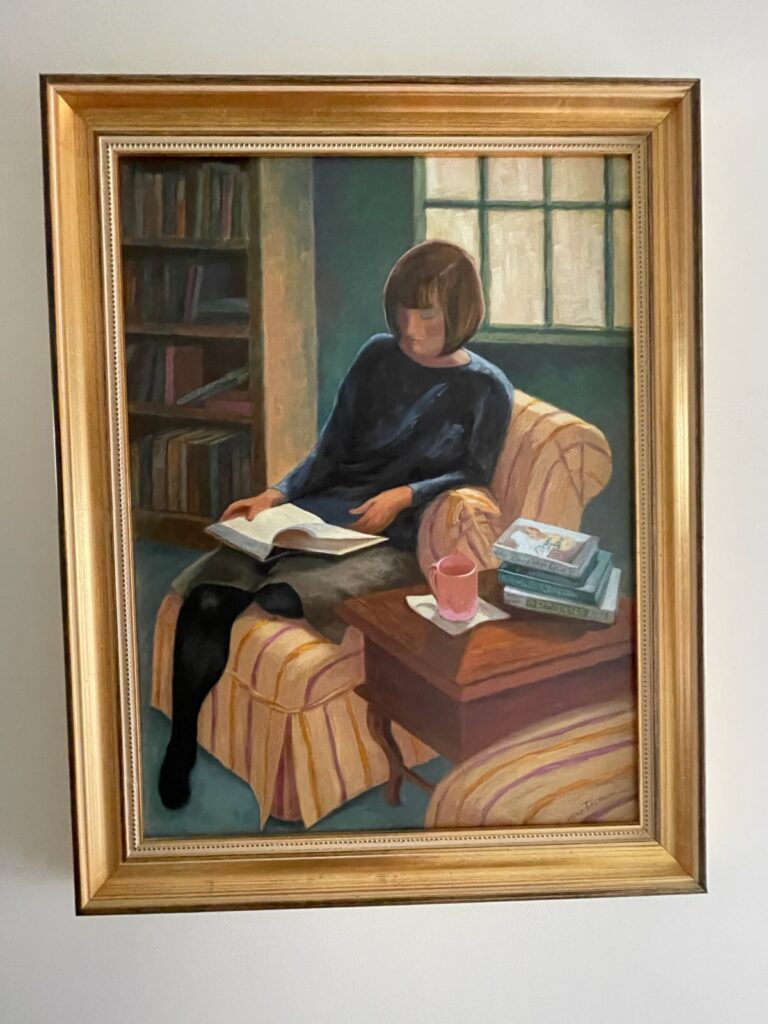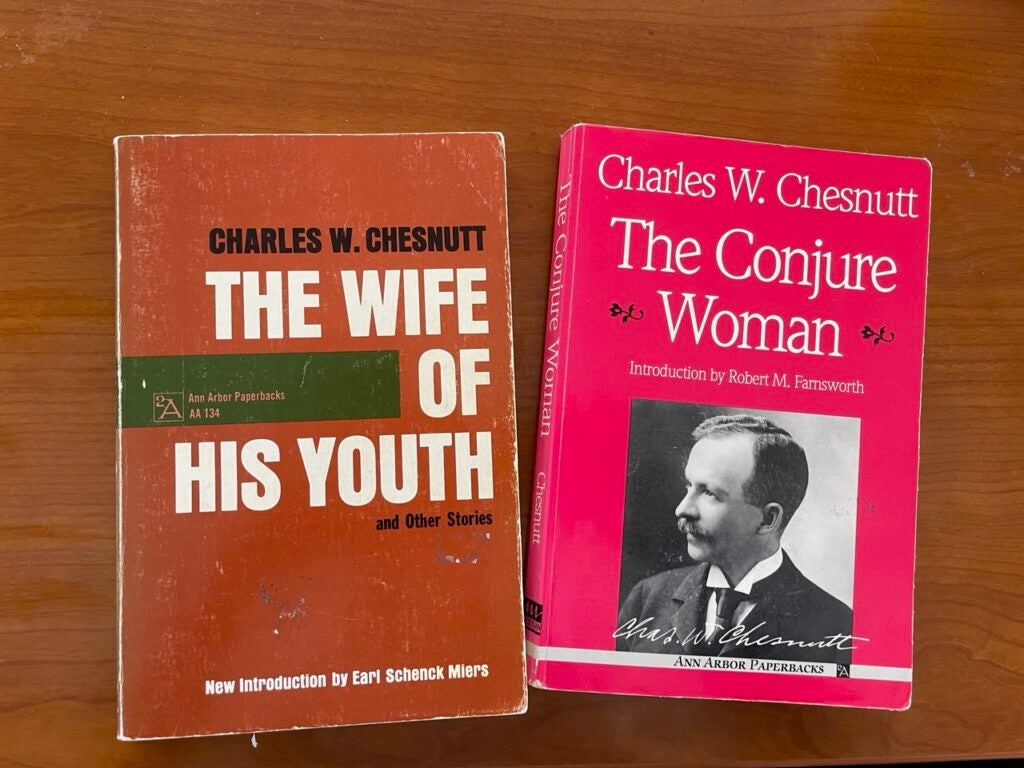by Margaret Bauer, Editor
We are sharing what our extended team is reading in a new series on social media. While most posts might not be this extensive, we do enjoy hearing about all the different materials that go into making our editors and writers as erudite as they are. As Editor Bauer reminds us regularly, “strong writers are avid readers.”
~Digital Editor

The Editor is reading five different things these evenings after work. She’s listening to (and counts that as reading) Ann Patchett’s Tom Lake (read by Meryl Streep)—”almost done,” she reports. . . .
Audio books help me keep up with reading non-North Carolina literature and books I’m not teaching.
I am also reading Loving Blue, a novel by Connie May Fowler (set in Florida). I just picked it up off my water-setting novels bookshelf over the weekend. It’s a good love story, so far. Set in the 1980s and ‘90s, its central characters are about the age I was at that time, though it took me a while to realize that, and when I did, I laughed at how much the novel had felt like historical fiction (no cell phones, for example).
I’m on the third volume of Madeleine L’Engle’s four-volume memoir (yes, that Madeleine L’Engle, of A Wrinkle iin Time, one of my childhood favorites). I’ve read numerous memoirs over the past decade, as I am transitioning from writing literary scholarship to writing memoir and other forms of creative nonfiction. So far the second volume is my favorite, and I recommend it to anyone dealing with a loved one suffering from memory loss.
My September Sun magazine came in this week, too. I’m parsing it out this month. I read almost the whole issue in one sitting last month. As I tell writers during workshops on submitting to literary magazines, read the magazines you want to publish your work in. And also, while you might not be able to subscribe to them all, subscribe to at least one of them. (I get comp copies of NCLR, so I picked The Sun, but I hope you’ll pick NCLR, of course.) When I read a strong creative nonfiction essay in The Sun’s pages, I’m oddly okay with the latest rejection letter from them. They’re publishing such excellent writing. If (when?) I get an essay in there, I’ll know it’s good!

And of course, “Professor Bauer” is reading for class, and this week that’s North Carolina African American author Charles W. Chesnutt, born in Ohio, but raised in North Carolina. Most of his work is set here, even if by the time he was seriously writing, he was back in Ohio—see NCLR’s definition of a North Carolina writer: he fits. Anyway, my Southern literature survey students are reading a few stories from his two 1899 short story collections. (Two books published in the same year? And his first two books? Now who does that sound like? Hint: another North Carolina writer. The first person to email NCLRStaff@ecu.edu will receive a free copy of a back issue featuring either of these two writers—Chesnutt or…your choice).
Since I’m reading the Chesnutt stories and in anticipation of the upcoming release of the pedagogical content we collected with the help of our NC Humanities grant last year, I’ll share here my own essay inspired by my experience of teaching a particular Chesnutt story, “On Flags and Fraternities: Lessons on Cultural Memory and Historical Amnesia in Charles Chesnutt’s ‘Po’ Sandy,’” published in the Southern Literary Journal in 2008.